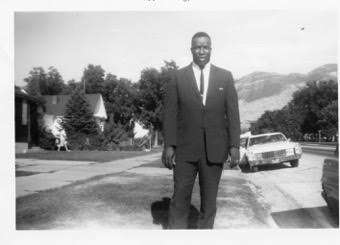In 1941 fewer than 4,000 African Americans were serving in the military and only twelve African Americans had become officers1 . By 1945, more than 1.2 million African Americans would be serving in uniform on the Home Front, in Europe, and the Pacific (including thousands of African American women in the Women’s auxiliaries).
Ralph Brooks, Sr. was one of many patriotic Black Americans who joined the military. The determination displayed to rise despite the crushing burden of repression is amazing. This W.E.B. Dubois quote summarizes this great generation. “There is in this world no such force as the force of a person determined to rise. The human soul cannot be permanently chained.” Powerful words that stand the test of time and set the stage for the civil rights gains of the 1960s.
The World War 2 (WW2) generation of Black Americans proved to White Americans that they would be productive members of society in several important ways. The “Tuskegee Airmen2 ” showed that the Black Man could fly aircraft and win in aerial combat. This lead to President Harry S. Truman’s Executive Order 99813 , which declared “that there shall be equality of treatment and opportunity for all persons in the armed services without regard to race, color, religion or national origin.” In short, it was an end to racial segregation in the military.
The returning Black Veterans of WW2 were entitled to the benefits of the G.I. Bill. The Black Veterans were eligible for educational benefits, which included tuition payments and a stipend for up to four years of college or other training4 . The G.I. Bill held the promise of significantly reducing black-white gaps in educational opportunity and long-run economic outcomes. The reality was that G.I. Bill exacerbated rather than narrowed the economic and educational differences between blacks and whites among men from the South.
Many Black Americans left the Southern United States and headed West where the racial tensions were slightly better.
The Western states, especially California, witnessed an explosive growth of their African-American populations. In 1930, some 50,200 African Americans lived in Los Angeles, San Francisco, and Oakland; twenty years later, the three cities’ combined black population had soared to 254,120. Altogether, 339,000 African Americans moved to the Western half of the country during the 1940s, in contrast to a mere 49,000 in the previous decade5 .
Mr. Brooks was born in Lexington, Missouri and joined the U.S. Army at age 16 because he was a patriot. What Ralph Brooks, Sr. did after leaving the military is a tale of a man seeking a better life. Ralph found a better life in Ogden, Utah and raised a family there.
Why does a black man leave Missouri and relocate to Utah? A good job is a reason. The First Transcontinental Railroad6 met north of Ogden, Utah and was a major railroad hub in the middle of the last century. Despite being in a different environment in which most people were Mormons7 , he did well.
Millions of Black Men like Ralph Brooks, Sr. enriched black communities and laid the foundation for future civil rights gains. Let us not forget these men and women. Edmund Burke said “Those who don’t know history are doomed to repeat it.”
Listen to this wide-ranging audio interview Jay Harold had with Mr. Brooks. You will learn what it takes to overcome stressful situations and inspire you to keep pushing forward.
Click this link to get free Health and Wealth information to improve your life. Play the free “Slow Roll Through Civil Rights” Game found on the Jay Harold website. Enjoyed this post? Share it and read more here. Questions? “Ask the Pharmacist a Question!”
Bibliography
- http://www.voanews.com/a/a-13-2005-05-10-voa47-67929177/396374.html
- https://www.nps.gov/tuai/index.htm
- https://armyhistory.org/executive-order-9981-integration-of-the-armed-forces/
- http://www.nber.org/digest/dec02/w9044.html
- http://www.inmotionaame.org/print.cfm;jsessionid=f8302127641474055738397?migration=9&bhcp=1
- https://en.wikipedia.org/wiki/First_Transcontinental_Railroad
- http://www.mormonnewsroom.org/article/mormonism-101






